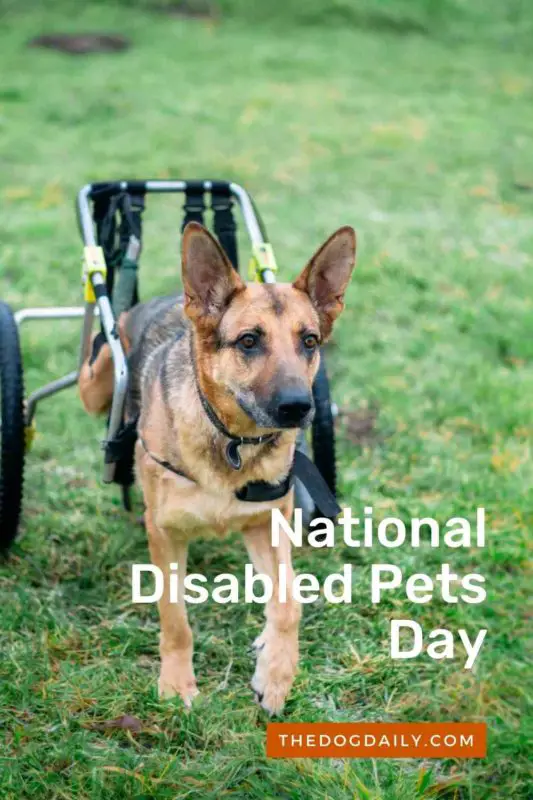Celebrate Disabled Pets on National Disabled Pets Day
Frankie scampers through life, tail wagging and wheels rolling, says owner Barbara Techel. That’s why Frankie, a perky Dachshund, left partially paralyzed after a fall, has been named the mascot for National Disabled Pets Day.
National Disabled Pets Day
National Disabled Pets Day, May 3, is an effort to promote disabled dogs like Frankie. Organizers hope to draw attention to the disabled, special needs, and senior pets awaiting adoption. The day is also intended to encourage animal lovers to volunteer time or donate money to organizations that assist disabled dogs and other disabled animals.
“Watching Frankie persevere, I knew we had an amazing opportunity to educate others that animals with disabilities can and do live quality lives if we give them a chance,” says Techel, who has written two books about Frankie “the walk ’n’ roll dog.” Frankie even works as a therapy dog, visiting the residents in a seniors’ facility. While Frankie’s back legs don’t work, he runs and plays like any other dog, happy to be alive.
Celebrating Disabled Dogs
Frankie is far from alone, says Laura Bradshaw, executive director of Healing Hearts Sanctuary in Kanab, Utah, where disabled dogs and other special-needs animals are given a permanent home or placed for adoption, when possible. “Not everybody knows that these disabled dogs can have fun, full, happy lives,” says Bradshaw. “We’re trying to get that perception changed.”
Owners of disabled dogs are often eager to share their pals’ tales. Here are just a few:
Gidget the Cocker Spaniel
Gidget’s missing front right leg didn’t stop Joanne Kaufmann and her husband from bringing the puppy home two years ago. Someone had tossed Gidget down a flight of stairs, injuring the pup’s leg so severely that it had to be amputated. “We still haven’t told her she only has three legs, and I’m not sure that she has figured it out yet,” says Kaufmann. “We do make accommodations to make her life easier. Her food bowls are raised, and she has a wheelchair she uses for walks.”
Gidget keeps up at the local dog park by playing smart. She will anticipate other dogs’ moves and “cut them off at the pass,” explains Kaufmann. The irrepressible Cocker Spaniel even digs for clams on beach vacations, despite having just one front leg.
Maurice the Maltese
When Yvonne Kleine’s dog, Maurice, was 12 years old, a degenerative neurological disorder and a failed surgery left the dog without the use of a rear leg. Maurice also lost his vision yet thrived to the ripe old age of 18, says Kleine. Maurice used a wheelchair for disabled dogs. “He would race around to the point where we called him Hot Wheels,” says Kleine. “His blindness was not a handicap as far as we could tell. We kept the furniture in the same places, and he navigated perfectly. I truly believe that having the freedom and mobility that the wheelchair afforded him contributed to his happiness and long life, despite his handicap.”
Garcia the English Sheepdog
It wasn’t a traumatic injury, but aging that slowed Maryglenn McCombs’ beloved Garcia. The 10-year-old, 125-pound English Sheepdog suffers from such severe arthritis that he could barely move several months ago, says McCombs. Garcia’s veterinarian recommended aquatic therapy. Garcia’s walks on the underwater treadmill at a canine rehabilitation center in Nashville, Tenn., have changed his quality of life, says McCombs. “His progress has been nothing short of incredible. Garcia is now able to take daily walks that sometimes last up to an hour,” she says.
Article written by Author: Kim Boatman

